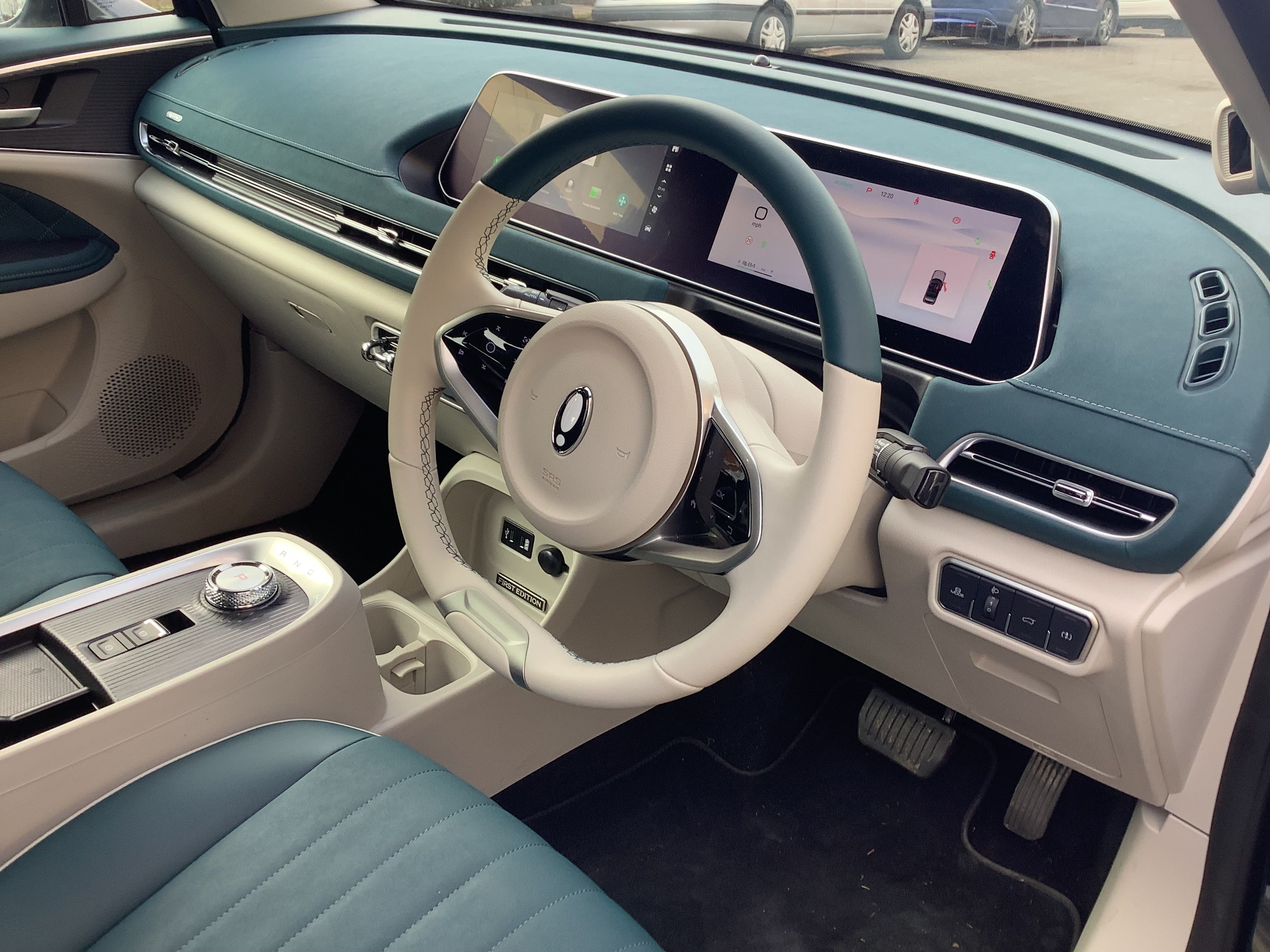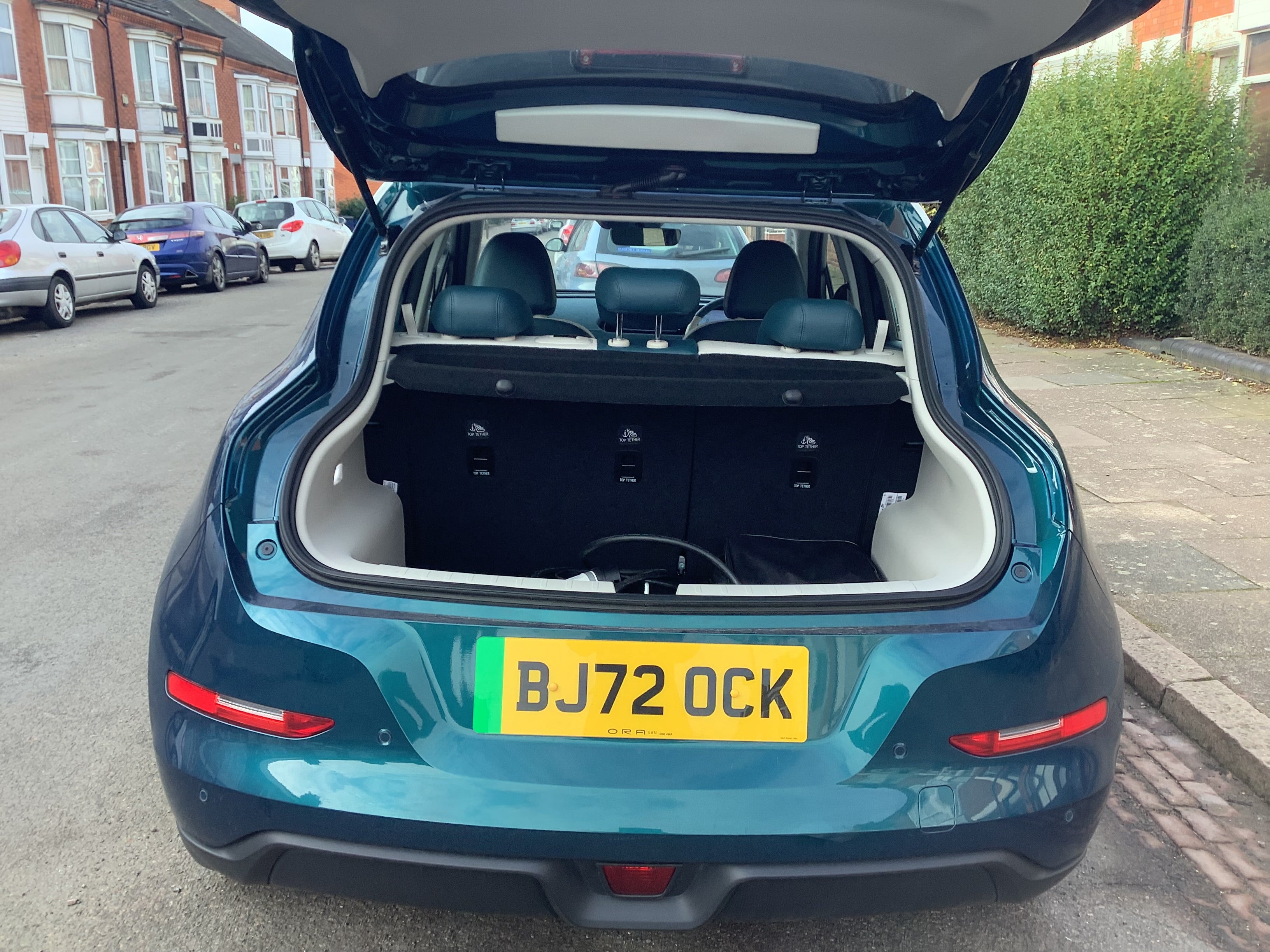Ora Funky Cat: fun and intriguing with a stylistic mixed pedigree
This cute, retro creature could be a sign of what’s to come in the EVs market, says Sean O'Grady


Your support helps us to tell the story
From reproductive rights to climate change to Big Tech, The Independent is on the ground when the story is developing. Whether it's investigating the financials of Elon Musk's pro-Trump PAC or producing our latest documentary, 'The A Word', which shines a light on the American women fighting for reproductive rights, we know how important it is to parse out the facts from the messaging.
At such a critical moment in US history, we need reporters on the ground. Your donation allows us to keep sending journalists to speak to both sides of the story.
The Independent is trusted by Americans across the entire political spectrum. And unlike many other quality news outlets, we choose not to lock Americans out of our reporting and analysis with paywalls. We believe quality journalism should be available to everyone, paid for by those who can afford it.
Your support makes all the difference.You’ve heard of funkypigeon.com, well, now meet Funky Cat (not .com), the latest electric car from China. And, yes, it’s sure to put the cat among the pigeons.
Obviously, I have to issue an immediate apology for that Alan Partridge-ism, but I couldn’t resist it. It came to me while I was taking this odd-looking motor for its first spin, and there’s something about its general mien that is youthful, bright, upbeat, optimistic and a little bit silly. Although the importers, International Motor Group (they currently market Isuzu and Subaru), don’t expect the Ora Funky Cat to become a bestseller, it deserves some success. I mean, just look at that face!
THE SPEC
GMW Ora Funky Cat First Edition
Price: £31,995
Propulsion: Single electric motor, powered by 45kWh battery
Power (hp): 169
Top speed (mph): 99
0-60 (seconds): 8.3
Economy (Wh/mile): 284
Range (miles): 160-193
CO2 emissions: 0
The looks are definitely the first thing that strike you. It’s a sort of pastiche of different vaguely retro styles, but it works well because it just surpasses the concept of kitsch and takes us into an entirely new realm, like a car designed by one of those AI applications. The front looks like an early Porsche sports car with very modern Mini headlamps. The back is a curvy unrelieved rump reminiscent of the first Nissan Leaf or something like a classic Renault 4CV. The flanks are much more contemporary, like a Kia or an Audi; while the two-tone customisation and roof-line on my example had a strong echo of contemporary Citroen C3 and Fiat Panda. Car spotters can amuse themselves for hours by trying to identify the origins of the various styling cues. The bonnet badge is basically a big exclamation mark, crying out “look at me, what do you think I am?” It’s distinctive, at any rate, and turns a few heads. The only drawback, for the marketeers, is that the classic “mini car” styling makes the car look smaller than it actually is – bigger than a Mini and around VW Golf/ID4 sized.
The funky themes are carried through indoors. It’s extremely tastefully done, and the bright plastics, quilted “leatherette” door trim and seats have a genuinely uplifting feel. Even for those with a shortish inside leg measurement, the seat squabs aren’t quite long enough to be properly comfortable on a long run. Like a lot of the latest electric cars, many of the old formalities are dispensed with – using the keyless entry you just hop in, strut the automatic gear dial to drive and you’re away. The parking brake comes off automatically and there’s no ignition or start button. As you settle in, you’re also welcomed with a little jingle and a graphic sequence on the hi-res screen featuring a couple of beautiful koi carp surfing away in perfect symmetry. All very whimsical, as are the retro switches on the dash, very much like those you see on the Mini, which in turn are derived from the 1959 original. As I say, lots to intrigue a car fan and to charm buyers who aren’t.

My only gripe with actually driving the car is that it has a bit too much tech and too few old-fashioned controls. You do need to use the screen to adjust the heating, for example, and some of the touch-screen icons are vanishingly small. The indicators are overly sensitive and take some getting used to, and the voice recognition system is a bit hit and miss. You say “Hello Ora” and it asks you what you want. It can cope with simple commands – “turn the volume” up – but it’s not so good with unusual destinations such as “Melton Mowbray” or finding BBC Radio 5. Still, as Oscar Wilde said about a talking animal, it’s not that it’s not done well but that it’s done at all.
Like a pedigree pet, the Funky Cat has a formal name that reveals more about its origins. It’s the GWM Ora Funky Cat First Edition. It’s made by Great Wall Motors (GWM), a significant Chinese player, and has a tie-up with BMW, which means the Funky Cat might well be the precursor of the next generation all-electric Mini, called the Mini Aceman, and not made in Oxford. Given everything that’s happened with Brexit, this wouldn’t altogether surprise one. We’ve had Chinese-made cars on the UK market before, under Japanese (Honda Jazz), European (Volvo S90) and British (MG) brands, but this is the first mainstream product from an “original” Chinese make, and that is I think what makes it something of note. There’s a genuine novelty there that we felt when the first Japanese cars came in, with their slightly different approach (reliability and a radio as standard) and unfamiliar names.
By the way, the Funky Cat has achieved a very good NCAP safety rating; and to attract interest and overcome unfamiliarity, it carries some confidence-building warranties – five-year/unlimited mileage for the car, 12-year anti-corrosion, eight-year/100,000 for the battery warranty, and five-year/60,000 miles for the paintwork. Given present geopolitical strains, you might want to consider how easy it might be to get parts if there was some trade war with China.

GWM will be the first of many Chinese entrants, and the Funky Cat is broadly competitive with the likes of the MG4, Seat Born or VW ID.4, for example. The “First Edition” is the only trim option for the time being. “Ora” doesn’t mean anything.
Likeable as the Funky Cat is, quick and comfortable enough, it’s nothing that special to drive, and I’d say the range is a bit less than the officially claimed 190 miles or so. It also seemed to take a little longer to charge at my local McDonald’s Instavolt fast charger, on my standard unscientific “time to consume a tea and burger” test. (Obviously, as with most battery cars, it’s better for the car and more convenient for its user to charge it overnight at home). The bigger drawback, again as usual with a battery-only vehicle, is price – £31,000 or so to purchase and commensurately higher lease charges than a petrol equivalent, and a time when the future path of electricity charges isn’t clear. For a while, the Funky Cat will be a rare sort of cute creature.
Join our commenting forum
Join thought-provoking conversations, follow other Independent readers and see their replies
Comments